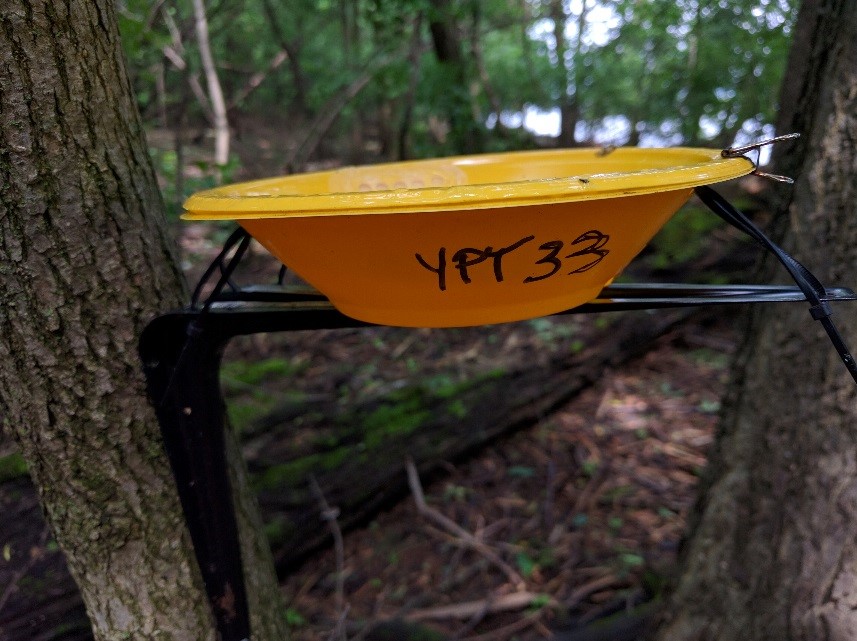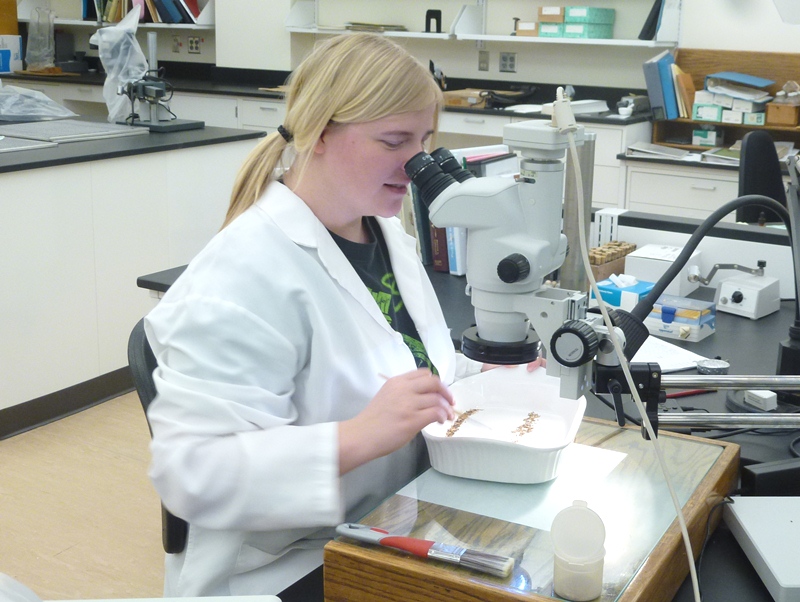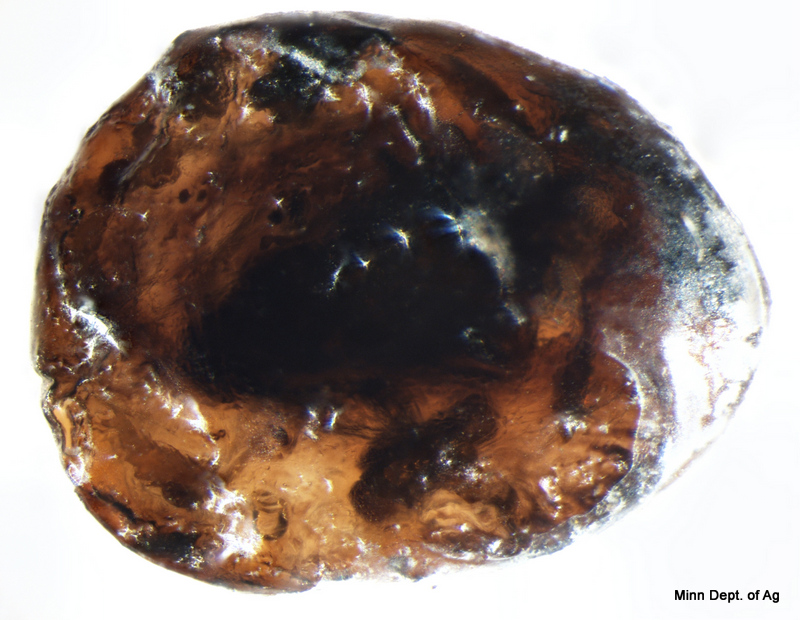This method was devised by Dr. Leah Bauer with the USDA Forest Service Northern Research Station in Lansing, MI. A 10 x 50cm section of outer bark is scraped off the trunk of an infested ash tree using a drawknife. The bark is collected by a plastic sheet laid at the base of the tree and then transferred to a paper bag to dry out and avoid the growth of mold while in storage. After the bark has dried for a month, the sample is placed into a sieve and shook for two minutes. Once done sieving the sample, the fine debris is transferred to a ceramic dish and analyzed underneath a dissecting microscope for the presence of parasitized EAB eggs.
This method was devised by Dr. Leah Bauer with the USDA Forest Service Northern Research Station in Lansing, MI. A 10 x 50cm section of outer bark is scraped off the trunk of an infested ash tree using a drawknife. The bark is collected by a plastic sheet laid at the base of the tree and then transferred to a paper bag to dry out and avoid the growth of mold while in storage. After the bark has dried for a month, the sample is placed into a sieve and shook for two minutes. Once done sieving the sample, the fine debris is transferred to a ceramic dish and analyzed underneath a dissecting microscope for the presence of parasitized EAB eggs.
A method used to collect adult parasitoids by use of pan traps. Yellow bowls are affixed to the trunks of ash trees with shelving brackets and filled with a clear propylene glycol solution. This liquid traps insects that are attracted to the yellow color of the bowl. Traps are sampled weekly throughout the summer. Samples are poured through a filter, frozen and screened for parasitoids in the late fall.

A method used to collect adult parasitoids by use of pan traps. Yellow bowls are affixed to the trunks of ash trees with shelving brackets and filled with a clear propylene glycol solution. This liquid traps insects that are attracted to the yellow color of the bowl. Traps are sampled weekly throughout the summer. Samples are poured through a filter, frozen and screened for parasitoids in the late fall.

A method used to collect adult parasitoids by use of pan traps. Yellow bowls are affixed to the trunks of ash trees with shelving brackets and filled with a clear propylene glycol solution. This liquid traps insects that are attracted to the yellow color of the bowl. Traps are sampled weekly throughout the summer. Samples are poured through a filter, frozen and screened for parasitoids in the late fall.





